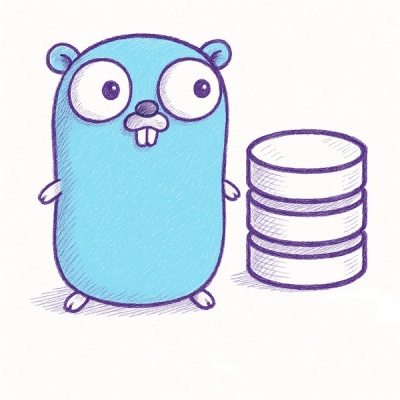
Security News
Browserslist-rs Gets Major Refactor, Cutting Binary Size by Over 1MB
Browserslist-rs now uses static data to reduce binary size by over 1MB, improving memory use and performance for Rust-based frontend tools.
deferred-queue
Advanced tools
This module brings to you a very lighweight control flow mechanism that it's meant to be the glue between the user calls and the asynchronous nature of your module. It provides a fluent interface, so if your module has an asynchronous API which tends to create the callback pyramid of doom, a deferred queue may help you. It can be also used as a standalone module.
For example, suppose you have an API like the following one:
var r = new Reader ("file");
r.read (10, function (error, bytesRead, buffer){
if (error) return console.error (error);
fn1 (bytesRead, buffer);
r.read (20, function (error, bytesRead, buffer){
if (error) return console.error (error);
fn2 (bytesRead, buffer);
r.close (function (error){
if (error) return console.error (error);
fn3 ();
});
});
});
The above example has two problems: the callback nesting and the error handling. With a deferred queue the example can be rewritten as follows:
var r = new Reader ("file");
r.on ("error", function (error){
console.error (error);
});
r.on ("close", fn3);
r.read (10, fn1);
r.read (20, fn2);
r.close ();
Look at the reader example for further details.
Projects using this library:
async.waterfall() is the function with more similarities with a deferred queue.
async.waterfall ([
//Task 1
function (cb){
cb (null, 1, 2);
},
//Task 2
function (n1, n2, cb){
//n1 is 1, n2 is 2
cb ();
}
], function (error){
if (error) return console.error (error);
});
dq ()
.on ("error", function (error){
console.error (error);
})
//Task 1
.push (function (cb){
cb (null, 1, 2);
}, function (error, n1, n2){
//n1 is 1, n2 is 2
})
//Task 2
.push (function (){});
Both are very similar but there are 3 big differences:
async's error handling has a major flaw. When something fails you don't know from which task comes the error, so you cannot apply rollback or fallback strategies.
This library separates a task from its result. If you look at the task 1 you can see that push() receives a second function as a parameter, it's the result of the task and is executed between two tasks: the current and the next. If the current task fails, the error is passed to this function and then the error event is emitted (if preventDefault() is not called).
async.waterfall() forwards the result values to the next task. That's ok until you need to use these values from any other task. Javascript has closures, let's use them. There's no need to pass the values to the next task, simply store them in a closure (the second parameter of push()) and let the user decide where to save them.
var myValue;
dq ()
.on ("error", function (error){
console.error (error);
})
.push (function (cb){
cb (null, 1);
}, function (error, n){
if (error) return;
myValue = n;
})
.push (function (){})
.push (function (){
//Use myValue
});
async internally uses process.nextTick() to call the next task. On the other hand, deferred-queue doesn't make any assumption, you decide how to enqueue the tasks; synchronously, asynchronously or both.
dq ()
.on ("error", function (error){
console.error (error);
})
//Synchronous
.push (function (){})
//Asynchronous
.push (function (cb){
process.nextTick (cb);
})
//Fake asynchronous (synchronous)
.push (function (cb){
cb ();
});
Returns a new DeferredQueue instance.
var dq = require ("deferred-queue");
var q = dq ();
Events
Methods
Arguments: error.
Emitted when an error occurs.
DeferredQueue#pause() : undefined
Pauses the queue execution. Look at the async-function-between-tasks.js example for further details.
q
.push (function (){
//Task
}, function (){
//Callback
this.pause ();
})
.push (function (){
//This task is not executed until you call to "resume()"
});
DeferredQueue#pending() : Number
Returns the number of pending tasks in the queue.
DeferredQueue#preventDefault() : undefined
Prevents the propagation of the error, that is, the error event is not emitted. It must be used from inside the callback parameter of the push() and unshift() functions.
q.push (function (){
//Task
throw new Error ();
}, function (error){
//Callback
if (error){
this.preventDefault ();
}
});
DeferredQueue#push(task[, result]) : DeferredQueue
Adds a task to the end of the queue and tries to execute it. If there are pending tasks, it simply waits until all the previous tasks have been executed. Think about it like a queue that is permanently executing tasks. Whenever you add a task it can be immediately executed because the queue is empty or enqueued if there are pending tasks that need to be executed first.
The task is the function that you want to execute. The result is a callback that is executed when the task finishes.
The tasks can be synchronous or asynchronous.
Synchronous
You can only return one value. If you want to return an error, throw it, it will be catched. Both the error and the value are passed to the result callback, if any.
q.push (function (){
return 1;
}, function (error, value){
//error is null
//value is 1
});
q.push (function (){
throw 1;
}, function (error, value){
//error is 1
//value is undefined
});
Asynchronous
If you want to execute an asynchronous task, you must call the cb parameter when you are ready to continue. As usual, the error is the first parameter.
q.push (function (cb){
process.nextTick (function (){
cb (null, 1, 2);
});
}, function (error, v1, v2){
//error is null
//v1 is 1
//v2 is 2
});
q.push (function (cb){
cb (1);
}, function (error, v1, v2){
//error is 1
//v1 and v2 are undefined
});
Note: Being synchronous or asynchronous depends exclusively on the user, but if you use the cb parameter, a different internal strategy is used. In other words, you can execute a synchronous task using the cb parameter. This is useful when you need to return more than one value.
There are subtle differences when the tasks are synchronous or asynchronous:
q.push (A);
q.push (function (){
q.push (C);
q.push (D);
});
q.push (B);
If A, B, C, D are asynchronous: A → B → C → D. Asynchronous example.
If A, B, C, D are synchronous: A → C → D → B. Synchronous example.
When an error occurs, it is passed to the callback and then, it is emitted. If you don't want to emit the error, call to preventDefault():
q
.on ("error", function (error){
//This function is not executed
})
.push (function (){
throw new Error ();
}, function (error){
if (error) this.preventDefault ();
});
I want to execute an asynchronous function inside the result callback
You can. Pause the queue and when you are ready to continue, resume it. Look at the async-function-between-tasks.js example for further details.
DeferredQueue#resume() : undefined
Resumes the queue execution. Look at the async-function-between-tasks.js example for further details.
DeferredQueue#unshift(task[, result]) : DeferredQueue
Adds a task to the beginning of the queue. It has the same functionality as the push() function.
FAQs
Series control flow library
The npm package deferred-queue receives a total of 26 weekly downloads. As such, deferred-queue popularity was classified as not popular.
We found that deferred-queue demonstrated a not healthy version release cadence and project activity because the last version was released a year ago. It has 1 open source maintainer collaborating on the project.
Did you know?

Socket for GitHub automatically highlights issues in each pull request and monitors the health of all your open source dependencies. Discover the contents of your packages and block harmful activity before you install or update your dependencies.

Security News
Browserslist-rs now uses static data to reduce binary size by over 1MB, improving memory use and performance for Rust-based frontend tools.

Research
Security News
Eight new malicious Firefox extensions impersonate games, steal OAuth tokens, hijack sessions, and exploit browser permissions to spy on users.

Security News
The official Go SDK for the Model Context Protocol is in development, with a stable, production-ready release expected by August 2025.